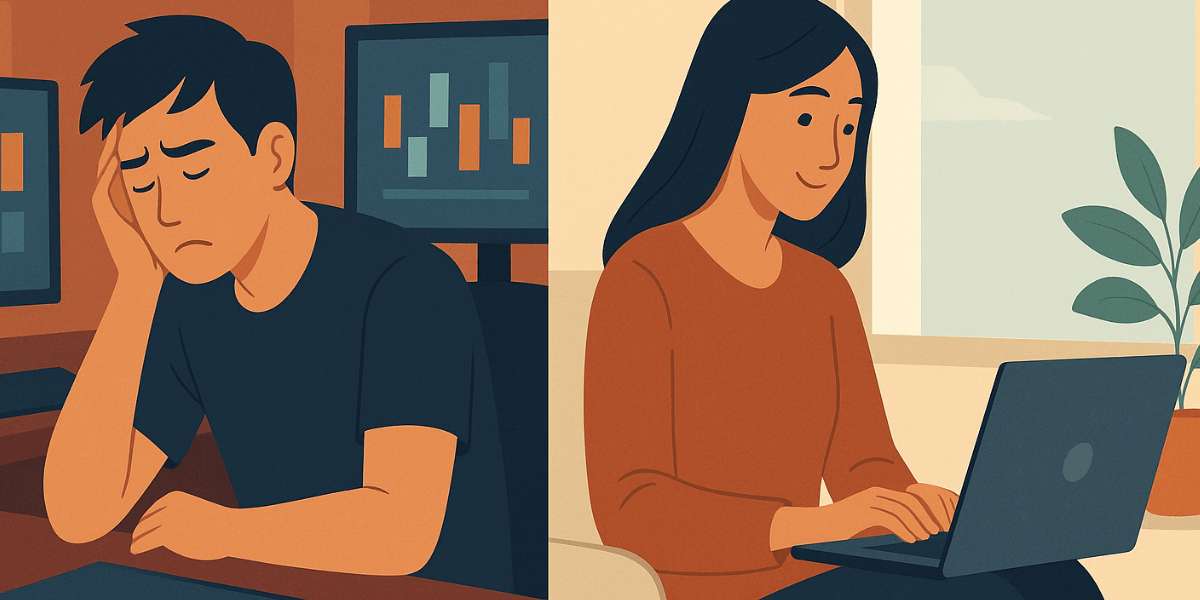Leverage is the ability to control larger positions with a relatively small amount of capital on the forex market. It is one of the key concepts in forex that allows traders to gain outsized returns and quickly grow their trading accounts.
Understanding Leverage
Using leverage, traders can trade larger amounts of currency than what they have in their trading accounts. For example, if a trader wants to trade the USD/SGD (U.S. Dollar/Singapore Dollar) currency pair, they could use leverage to build a position much larger than their initial investment.
Leverage uses a small amount of money as a deposit, known as a margin. The margin requirement is the percentage of the total trade amount that a trader must provide upfront. The broker funds the rest of the position. For instance, if the margin requirement for trading USD/SGD is 1%, and a trader wants to open a $100,000 position (or one standard lot), they only need to put up $1,000 as the margin. The broker covers the remaining $99,000. This means the leverage ratio here would be 100:1, allowing the trader to control $100,000 with just $1,000.
Benefits of Using Leverage
The primary benefit of using leverage is its ability to amplify investment returns, building wealth much faster. In the above example, a 100:1 leverage ratio can result in a significant profit if the market moves in traders' favor.
Suppose the USD/SGD pair rises from 1.3500 to 1.3550. A leveraged position of $100,000 would yield a profit of approximately $500, whereas the same move would generate only $5 without leverage.
Risks of Using Leverage
While leverage can amplify profits, it also increases the risk of losses. Just as profits are magnified, so too are losses. If the market moves against a trader’s position, the losses can quickly exceed the initial investment. For example, in the USD/SGD pair, if the exchange rate moves unfavorably by 1% against a $100,000 leveraged position, the trader could lose $1,000. This would wipe out their entire margin investment. For that reason, leverage is often described as a double-edged sword.
Another risk associated with leverage is the possibility of a margin call. A margin call occurs when the equity in a trader's account falls below a certain level, prompting the broker to demand additional funds to cover potential losses. If the trader cannot meet the margin call, the broker may close the position, leading to forced liquidation.
This can result in significant losses, especially in volatile markets like forex, and its effects are often present during unexpected events—for example, during a Brexit vote or in the immediate aftermath of the COVID-19 pandemic. Every time all asset prices decline simultaneously, it is likely the effect of forced deleveraging when brokers seize and offload positions from their leveraged clients.
Leverage Strategies
To manage the risks associated with leverage, traders must choose the right leverage ratio that aligns with their risk tolerance and trading strategy. Conservative traders may opt for lower leverage ratios, such as 10:1, to limit their exposure to market volatility. More experienced traders may use higher leverage ratios, such as 50:1 or 100:1, to capitalize on market opportunities.
Another effective strategy for managing leverage is using stop-loss orders. A stop-loss order is a predetermined price level at which a trader will exit a position to prevent further losses. For example, if a trader enters a leveraged position in the USD/SGD pair at 1.3500, they may set a stop-loss order at 1.3450 to limit their losses if the market moves against them. However, a tight stop-loss might cause the trader to get whipsawed and stopped out before the trade turns favorable.
Hedging is another way of managing leverage. Hedging involves taking an offsetting position to reduce the risk of losses. For example, if a trader is long on USD/SGD, they might take a short position in another correlated currency pair to hedge against potential losses.
Effective margin management is crucial when trading with leverage. Traders should monitor their margin levels regularly and ensure they have sufficient funds to cover potential losses. This helps avoid margin calls and forced liquidation, allowing traders to maintain control over their positions.
Leveraging Different Trading Instruments
Leverage is commonly used in spot forex trading, where traders buy and sell currency pairs at current market prices. For example, a trader might use leverage in the USD/SGD market to take advantage of short-term price movements. Leverage is also used in trading futures contracts in forex, which are agreements to buy or sell a currency at a predetermined price in the future. Futures contracts often have lower margin requirements, making them attractive to traders seeking leverage.
Forex options are another instrument that can be leveraged. Options give traders the right, but not the obligation, to buy or sell a currency at a specified price within a certain timeframe. Using leverage, traders can increase their potential returns from options trading, although the risks are also magnified.
Regulations and Restrictions
Regulatory bodies can impose leverage limits to protect traders from taking excessive risks. The most famous case is the European Union, which introduced a rule to limit the maximum forex leverage at 30:1. Meanwhile, in the United States, this limit is higher at 50:1.
The Monetary Authority of Singapore (MAS) regulates leverage in forex trading and has imposed leverage limits of 20:1 for retail clients and 50:1 for professional clients.
Professional (accredited) clients can qualify if they have personal assets of more than 2 million SGD, have 1 million SGD in cash, or earn over 300,000 SGD annually.
Leverage and Its Impact on Market Volatility
Leverage can increase market volatility, allowing traders to take larger positions with relatively small capital. When a significant number of traders use high leverage, it can lead to sharp price movements in response to market news or events.
The use of excessive leverage is similar, in some ways, to the use of 0-day-to-expiry options trading that short-term speculators popularized in recent years, which caused a rise in the volatility of the intra-day stock market.
However, leverage is still a powerful tool in forex trading that offers the potential for higher returns to those who are conscious enough not to abuse it. By understanding how leverage works and implementing effective risk management strategies, traders can harness the benefits of leverage while minimizing the potential downsides.
Frequently Asked Questions
What is a good leverage for forex?
There is no consensus on appropriate leverage in forex. Some traders prefer to work with 1:100 leverage, but there is no reason why a lower leverage of 1:10 to 1:30 cannot generate significant returns.
Is leverage trading allowed in Singapore?
The Monetary Authority of Singapore (MAS) allows and regulates leverage trading. The maximum allowed leverage is 1:20 for retail traders and 1:50 for professional traders.
Note: Any opinions expressed in this article are not to be considered investment advice and are solely those of the authors. Singapore Forex Club is not responsible for any financial decisions based on this article's contents. Readers may use this data for information and educational purposes only.







